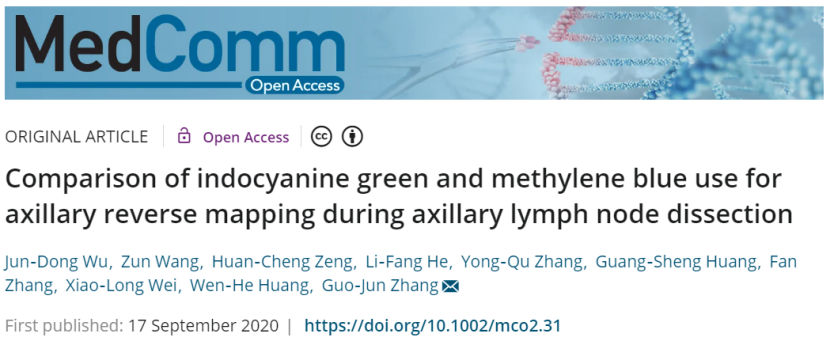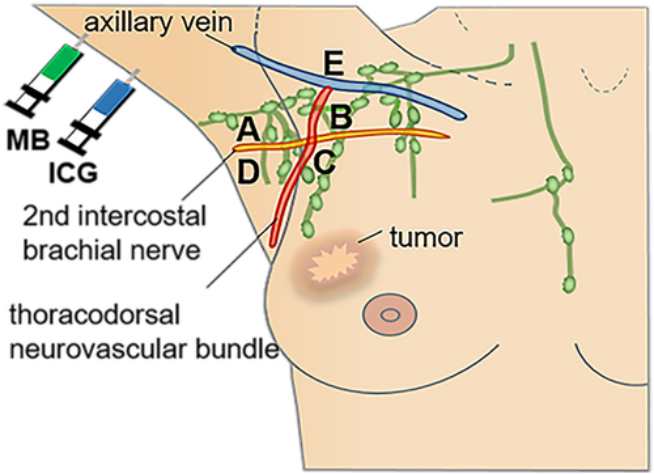Approximately 30% of patients with breast cancer harbor regional lymph node metastases. Although complete level I and II axillary lymph node dissection (ALND) remains the standard of care in this setting, the associated morbidity is significant due to upper limb effects, including lymphedema, seroma, dysfunction, and sensory loss. Lymphedema of the upper extremity is particularly debilitating and ostensibly results from disrupted lymphatic drainage at the axilla. Axillary reverse mapping (ARM) has been used to trace lymphatics and lymph nodes from the upper extremity, so that drainage is preserved and resultant lymphedema is curtailed.

This study compared the feasibility of ARM using indocyanine green (ICG) or methylene blue (MB), and accessed the oncologic safety of the procedure. Overall, 158 patients qualified for ALND were enrolled. The characteristics of ARM‐identified nodes were recorded with ICG (n = 78) or MB (n = 80) visualization. Fine‐needle aspiration cytology (FNAC) of the nodes were performed and validated by histologic analysis. The nodal identification rate in the ICG group significantly surpassed that of the MB group (87.2% vs 52.5%, P < .05) with fewer complications. Note that 10.9% of the patients had metastatic involvement of the ARM‐identified nodes. Also 80% of the positive nodes were found in areas B and D, while the ARM‐identified nodes mainly located in area A. All the 51 nodes diagnosed as negative of malignancy by FNAC were free of metastasis. Nodal metastasis was significantly correlated with extensive nodel involvement, advanced disease, and the characteristics of identified nodes. In conclusion, ICG appears superior to MB for ARM nodes identification. FNAC, together with the features of primary tumors and ARM nodes, can delineate which nodes could be preserved during ALND.

Fig.1 The location of nodes identified by ARM during ALND and dye injection sites
Article Access: https://onlinelibrary.wiley.com/doi/full/10.1002/mco2.31
Website for MedComm: https://onlinelibrary.wiley.com/journal/26882663
Looking forward to your contributions.



